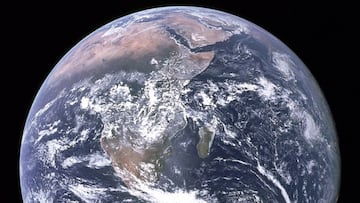What will be affected by the change in the rotation of the Earth’s core?
Seismic waves flowing through the Earth have shown that our planet’s inner core may have stopped spinning during the previous decade and may be reversing its rotation.


The core of our planet is a solid mass of nickel and iron that has been compressed by gravity into an approximately 2,400-kilometer-wide spherical. This solid core is surrounded by a layer of liquid iron and nickel, which forms the protective geomagnetic field of the Earth, followed by layers of mantle and crust.
BREAKING NEWS:scientist in Beijing have studied models of earths core from earthquake data and have determined that the core is about to stop spinning.I’d like to ask the audience what our global temperatures were 90 ish years ago? Drastically different? Coincidence?@CNN @cnnbrk pic.twitter.com/lTUUuQHQvC
— mr D (@qaintderek) January 27, 2023
Since 2009, the inner core, a 1,200-kilometer-diameter (745-mile-diameter) metal orb in the heart of the Earth, has rotated increasingly slowly. A similar thing occurred at the start of the 1970s, after which its velocity increased. This reveals that the inner core does not rotate at the same pace as the planet’s crust, which has a significantly wider radius: 6,378 kilometers (3,963 miles). Instead, it is hypothesized that the inner core follows a fluctuation cycle that lasts around seven decades.
Although this may seem like the scenario of a science fiction catastrophe film, the shift in rotation of the Earth’s inner core does not cause concern.
Related stories
As long as we continue to orbit the Sun, the core will continue to spin indefinitely. In addition, any discussion of the core rotating backward is only applicable when seen from a single position on the planet’s surface.
The worst that may occur is a little increase in the duration of the day
The Earth rotates on its axis once every 86,400 seconds. The rotational variation of the core spans from two-tenths of a second slower to two-tenths of a second quicker, accounting for about 0.00023% of the total. The variation in day duration that seems to be caused by this rotational motion is hardly more than a millisecond.

